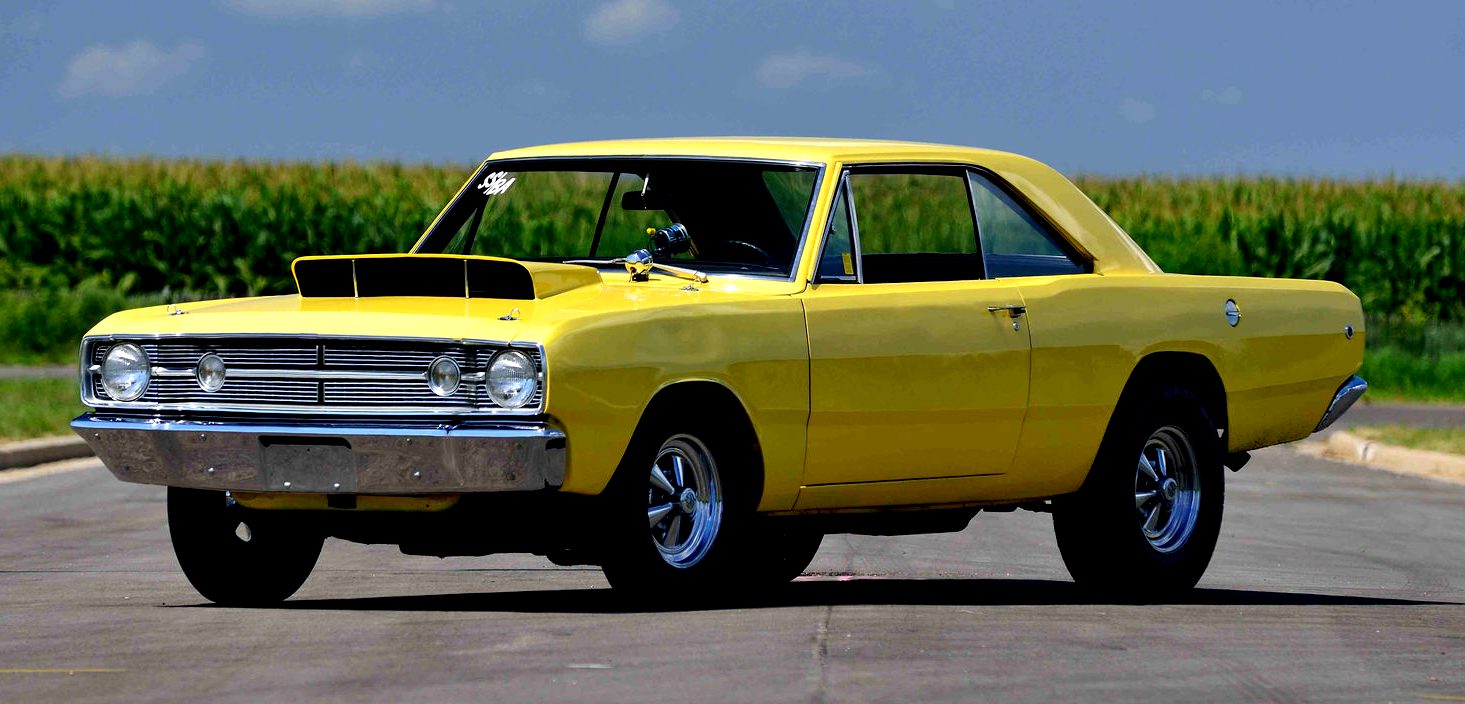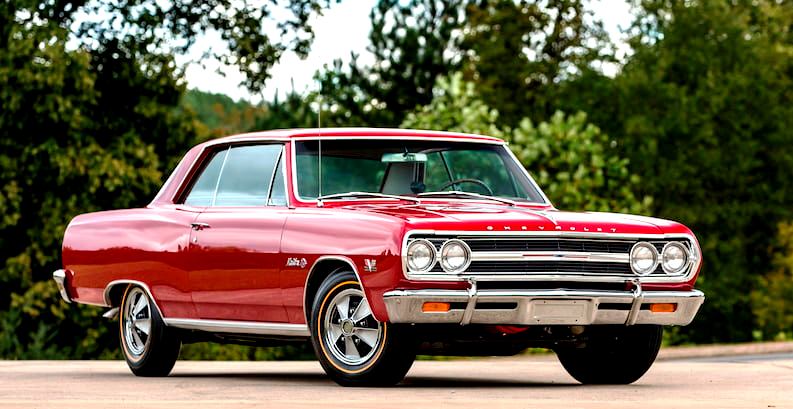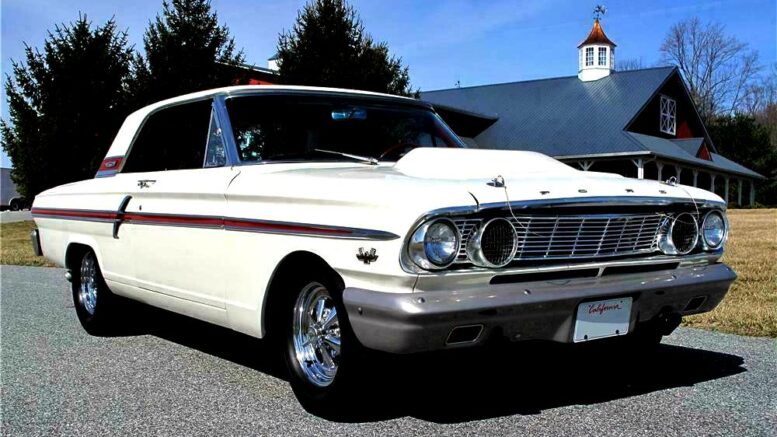Q: Hi Greg and I enjoy your columns on the muscle car era very much.
In what year did the Big Three produce its first real full-size muscle car? Which manufacturer’s car was your favorite? Even though I’m a big Ford fan, can you touch on all three of Ford, Chevy and Plymouth/Dodge? Also, which of their midsize cars were the hot tickets back in the 1960s? Thanks much, Earl P. from Rhode Island.
A: Earl, since you’re a Ford fan, let’s start with Ford.
In my opinion, the first full-size muscle car produced was the 1962 406 Galaxie, which started making big numbers at drag strips coast to coast. The 406 relied on a three two-barrel carb setup and delivered 405 horses. Then, in 1963 Ford enlarged the V8 to 427 with dual quads and 425 horsepower, and the match race madness was in “full speed ahead” status.

The 1968 Dodge Dart Hemi is without a doubt the most popular of the special built midsize muscle cars, as just 80 were ever built. If you knew the order code L023 and had some serious drag racing experience, you might have qualified to order one of these monster muscle cars. (Compliments Mecum Auctions)
As for the most powerful midsize Ford, that’s easy. It was the 1964 Fairlane Thunderbolt 427, of which Ford only made 127 of them using the 2-door post Fairlane body. These Thunderbolts were a combination of the skills of the mechanics at Tasca Ford in your home state Rhode Island with the blessing of the Ford Motor Company.
Specifically, Tasca built the first ‘63 Thunderbolt prototype on the Fairlane chassis that included fiberglass front end and trunk, and aluminum fender panels and bumpers resulting in a weight of just 3,320 pounds. Also, that first ’63 Tasca Thunderbolt had a 406-inch engine for power and ran in A/Factory Experimental (A/FX) competition. In 1964 to officially legalize the car for NHRA racing, Ford released a special order okay for its now 427-inch, 425-horsepower prize possession.
Any consumer with the necessary $3,780 could order a ’64 427 Fairlane Thunderbolt from their hometown Ford dealer. However, the now factory Ford backed effort resulted in 125 Thunderbolts built in 1964, while in 1965, only two were delivered. Today, an original Thunderbolt is priceless and looking back, the Tasca Ford Thunderbolt driven by Bill Lawton and the soon to be “California Flash” Butch Leal were two of the best known Ford Thunderbolt drag racers.
In ending on your Ford question, I hope you enjoy watching Bob Tasca III uphold the family Tasca Ford dealership racing heritage (located in Cranston, Rhode Island) as he races his Ford Mustang Nitro Funny Car on the NHRA circuit. He’s already won two races in 2021 and looks to be one of the favorites to win his first NHRA funny car title. His late grandfather, Bob Tasca, Sr. deserves credit for developing the Thunderbolt in 1963, and the soon to come Ford Cobra Jet programs, too.
Plymouth and Dodge made its big, full-size muscle car statement in 1962 with the 413 Super Stock Plymouth Savoy and sibling Ramcharger Dodge Dart. Although neither were the best of lookers, when you uncapped the factory exhaust cutouts and let the dual-quad’s ram induction 410 horsepower roar, few cars could keep up with them in factory trim.
Most important, these full-size MOPAR muscle cars christened the age of the automatic, as most of the winning Plymouths and Dodges did not have 4-speed manuals. Seems Chrysler had perfected a 727 Torqueflite automatic thanks to smaller converter technology by beefing up the converters used on its slant-6 cylinder engines. It worked and resulted in automatic equipped muscle cars becoming very popular.

Back in 1965 Chevrolet released just 201 examples of its new SS396 in the Chevelle line. Known as the Z16, it featured a 396 with 375 horses and hydraulic cam under engine code L37. It differed from the 1965 Corvette 396, 425-horse L78 that had a solid lifter cam. (Compliments Mecum Auctions)
As for the Chrysler-built midsize special, nothing compares to the factory built 1968 Hemi Dart, which is similar to the Thunderbolt in drag racing theory and worth tons of money today. If you knew the production code of L023, you had a chance of owning one of the Hemi Darts built specifically for Super Stock drag racing as just 80 1968 Hemi Darts were factory built. The 426 Hemi under the hood was rated at 425, but anyone in the know realized 500-horses awaited them with a bit of tinkering under the hood.
Over at Chevrolet, the lyrics “nothing can touch my 409,” by the Beach Boys rang true at the nation’s drag strips. Be it the rare 1961 Impala with the 409 or the 1962 Impala, BelAir and Biscayne, the full-size 409 Chevy with dual-quads was the hot ticket. Advertised at 409 horses in ‘62, and then 425 in 1963, these 409s were full-sized brutes that dominated many a drag strip back then.
As for Chevy’s midsize special, the very rare 1965 Chevelle SS 396/375 pre-dated all the other great Chevelle Super Sports. If you were lucky to buy one back in ‘65, you are now sitting on a six-figure investment. However, of the three manufacturers, the ’65 Chevelle SS 396 code Z16 might be rare, but was no match performance wise for the Thunderbolt or the Hemi Dart that were purpose built drag cars. It’s more the ’65 Chevelle’s low SS396 production number as just 201 were ever built, putting it into the Thunderbolt and Hemi Dart very rare collector car category.
In ending, I have to add to this list both Pontiac and Mercury, as both brands deserve recognition. Big names driving 427 Comets were everywhere, including Don Nicholson and Ronnie Sox to name a few. Although the midsize 421 Super Duty V8 Tempest was never offered as a consumer available unit, racers like Don Gay, Arnie Beswick, and Harold Ramsey made sure the Pontiac fans had lots to cheer about.
Thanks for your letter Earl, which I had to cut down a bit, and your kind words.
(Greg Zyla is a syndicated auto columnist who welcomes reader questions and comments on auto nostalgia, collector cars and motorsports at greg@gregzyla.com or at 303 Roosevelt St., Sayre, Pa. 18840.)



Be the first to comment on "Cars We Remember – Big and medium-size 1960s muscle cars"